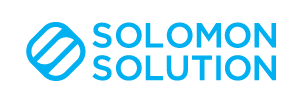
This part goes hand-in-hand with building your Buyer Persona to guarantee that your marketing efforts are bringing in real Visibility. You always want to be ahead of the game by knowing everything about your ideal customers. Doing that requires meticulous research.
Collecting Data through Research
It’s okay if you don’t have any data yet. You can still make educated guesses. These activities that Moz outlines (that we summarize below) help get you started or expand your current efforts.
Be sure to do a mix of research types for the most expansive, accurate, and precise data.
Don’t limit yourself to 1 source.
Qualitative Research
This has a smaller sample size, and allows teams to identify customer needs.
- Affinity mapping. A very common method, but mostly based on assumptions. It goes something like this:
- 1) Gather assumptions of customer needs. What are their goals, activities, problems, and frustrations? (5-30 minutes)
- 2) Gather assumptions of customer attributes. What is their background? (5-30 minutes)
- 3) Find proof. Look for facts, analytics, data, and other research to confirm assumptions. (15-45 minutes)
- Focus groups. Formal meetings with a target segment group to answer research questions.
- Customer interviews. A 1-on-1 version of focus groups.
- Ethnographic research. Lots of social listening, forum searches, online communities, and keyword research. Watch people offline and online in their natural habitats.
| EXAMPLE QUESTIONS |
|
Quantitative Research
This requires a large sample size and is often associated with “numbers” and “values.” In other words, statistical data.
- Multiple-choice surveys. Ask precise questions, not open-ended.
- Market segmentation tools. They provide prebuilt segments based on data using survey panels and usage data.
- Analytics. Ranges from demographic tracking, inorganic and organic searches, external and internal searches, keywords, firmographic – you name it.
- User profiles. Gathered from their social media profile login and other identity data providers.
- Internal data. Always look for data on your current customers (i.e. sales, interactions, reviews, transactions).
- Public studies. Dig for studies by other corporations that are publicly available.
- S. Census Bureau. Has free or cheap business data you can access immediately.
| EXAMPLE QUESTIONS |
|
Some quick tips on how to maximize the efficiency of your direct customer interactions:
- Take notes aggressively. Aggressively. Observe gestures, cues, mannerisms, etc.
- Interview both consumers and stakeholders who interact with your consumers.
- Ask for hard data, and limit responses of unreliable, subjective opinions.
- Infer some of your data based on their answers.
- Think about recording them to share with team members.
- According to Harvard Business Review, don’t put yourself in the customer’s shoes (it’ll only leave you egocentric)
How to budget your Market Research
Generally, the smaller the sample size and the more you utilize your in-house team, the lower the costs.
You can do these in under $100
- Affinity mapping (a couple hours of collaborative brainstorming)
- Interviews & focus groups (a $20 gift card or a lunch and tour of your office could suffice)
- Surveys & questionnaires (simple low-cost incentives are usually enough)
- Basic analytics (simple tools like Google Analytics are free or cheap)
- Social listening (buckle down and read a lot)
It isn’t until you need bigger sample sizes and quantitative research that things begin to get costly. Complicated tracking methods and data syndication tools eat up a lot of your budget. You can hire agencies dedicated specifically to do all the big scope research for you, especially if you want the intel on your competitors.
Organizing Data for Analysis
Now it’s time to segment your data for organization. I breezed through it in the Buyer Persona Development post, but here’s a better picture.
Some Key Segmentation Groups
The must-haves, at the least.
- Demographic Segmentation. Gender, birthday, language, location, household type, education, income
- Psychographic Segmentation. Lifestyle, values, beliefs, personal & career goals, needs & challenges
- Behavioral Segmentation. Shopping & buying behavior, online vs. offline, frequency, engagement, site rank
- Transactional Segmentation. Total orders, last purchase, registration source, popular product & categories, timing
- Social Data Segmentation. Interests, friends & followers, relationship, social media profiles, common or trending phrases
Once you identify the groups that constitute your primary (subscribers, repurchases) and secondary (one-time, casual) customers, you can develop appropriate strategies that target their specificities. Your content and marketing will be off the charts! Literally.
But we’re not done yet. We still need to figure out how they buy so you can maximize your profits. The next post outlines the Buyer’s Journey and how to pinpoint their buying patterns.
Research is important to help segment your relevant customers.
Targeting everyone is targeting no one.
This is a blog series outlining the details of the 6 principles of Engagement Marketing: VAIRCG.

